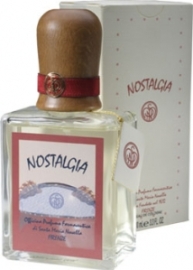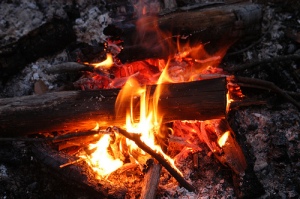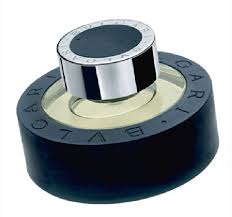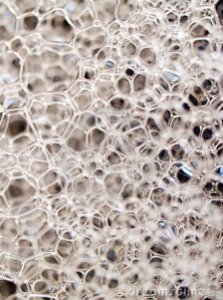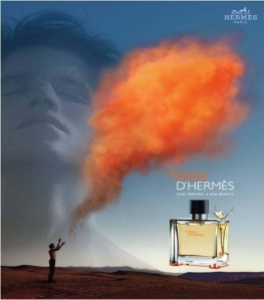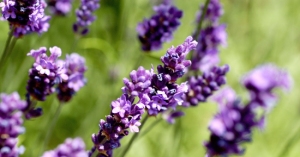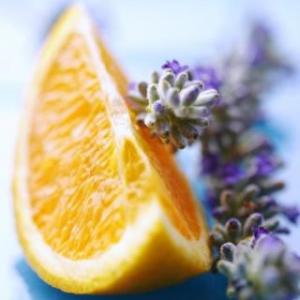One of perfume’s many joys is its transformative power, its ability to take you to other worlds and points in time, or to turn you into someone else. The rather aptly named Nostalgia briefly made me feel like the racing legend, Mario Andretti, in a 1970s Alfa-Romeo Spider convertible or like the ultra-cool Steve McQueen in his Jaguar XKSS.
Close your eyes and imagine a powerful old car on a racing track set in a birch wood forest. The smell of diesel fuel is in the air, along with the cracked leather seats of the ancient vehicle, and the smell of campfire smoke from a fire in the trees beyond. Bergamot swirls its sweet juices into the mix, along with vanilla, amber and earthy patchouli. As you rev your engines, and press your foot on the pedal, you speed away so fast that you leave the diesel fuel far behind, and enter into a vanilla, amber cocoon nestled amidst the birch trees. There, you take shelter in a haze of creamy, warm, lightly powdered vanillic sweetness infused with campfire smoke. It’s a simple smell, but then, Nostalgia is a return to a simpler, more nostalgic time.
Nostalgia is a fragrance from Santa Maria Novella, an Italian niche house based in Florence and one of the oldest actual pharmacies in the world. By many accounts, Santa Maria Novella is also the real, true source for the birth of cologne as a type of fragrance. You can read the full details of their fascinating, storied history going back to the 1200s and to Dominican friars in Florence in my earlier piece on the Farmacia (and its Ambra cologne). The house has been connected to everything from Catherine de Medici on her wedding day, to a marchioness burnt at the stake as the last “witch” in France, and marauding thieves who fought off the Black Plague. It’s completely fascinating stuff, if you are a history junkie as I am.
Even cooler is the fact that many of the current fragrances in Santa Maria Novella line continue to have the exact same olfactory profile as they did several centuries ago. In fact, they are said to follow a completely unchanged recipe, thanks to Santa Maria Novella’s heavy focus on all-natural ingredients (with no animal testing).
Nostalgia, however, is brand new fragrance, relatively speaking. It is an eau de cologne that was released in 2002, which is a far cry from the 1600s or 1800s date of some of their other creations. By those standards, it was practically delivered yesterday.
Nostalgia is a leather scent which Santa Maria Novella describes as follows:
Santa Maria Novella’s most original fragrance for men, Nostalgia is the scent of a vintage racing car. Using mixes of rare South American woods, vegetable musk, patchouli, citrus wood, tobacco, amber and vanilla, it brings to mind the smell of benzene, tires and vintage leather for a truly unique and individual eau de cologne.
According to Fragrantica, Nostalgia’s perfume pyramid is:
Top notes: bergamot, rubber and styrax. Heart: cedar and patchouli. Base: leather, amber, vanilla and birch tar.
Nostalgia opens on my skin with diesel fuel. Yes, the smell of actual gasoline, but an extremely refined, high-class gasoline, if you can believe it. It smells like filtered, perfumed gasoline that is scented with fresh, sweetened, but somewhat zesty bergamot, and with a hint of vanilla. Something very herbal and fresh lingers in the rubbery corners, along with traces of general sweetness and the tiniest suggestion of a warm element in the base. The vanilla quickly recedes to the sidelines, and its place is immediately taken by birch tar on fire. There is smoke, more smoke, black rubber, and then, bubbling black tar, all enveloped in that refined, bergamot-scented racing fuel.
I find the whole thing fascinating, and, I swear to you, it’s not like an olfactory assault at NASCAR. Instead, it’s oddly and shockingly smooth. I repeat, something about the overall combination feels almost refined, or as refined as such an accord could be. One reason why is because nothing is out of balance. The racing fuel is not a barrage of anything really sharp, extreme, or chemical; I never feel as though I’m filling my car at the gas station, though the vehicle may have a tiny leak somewhere. The strong element of crisp, chilled, but sweetened bergamot definitely helps, as do the subtle hints of vanilla and amber lurking at the edges.
Thanks to the singed birch trees, there is an outdoors feel to this Grand Prix race track. At the same time, there is also an undertone of black pepper and cracked leather. The latter is not the butch, latex, fetishistic bondage leather of some fragrances, like Etat Libre‘s difficult Rien. However, it’s definitely not the well-oiled, polished leather of Puredistance M, either. Despite the birch tar commonality, this leather also has nothing in common with Caron‘s Tabac Blonde, Knize, or Cuir de Russie, at least in their current, non-vintage manifestations.
Nostalgia’s note is a tiny, fractional bit closer to Andy Tauer‘s Lonestar Memories, but it’s not really that either. It lacks the feeling of soldering mechanics, the sticky sweetness, the sharpness, and even the forcefulness of the birch tar in Lonestar Memories. This is much smoother, softer, and more refined. As a whole, both the birch tar smoke and its leather undertone in Nostalgia feel like a completely different take on the note for me. This is the leather of an old car with some goaty, diesel, smoky aspects. It’s rough in the untamed way of birch campfire smoke, but it is also darkly resinous with styrax, and a little bit fresh and cologne-like with bergamot.
Less than 10 minutes in, Nostalgia shifts and starts to move away from the racing fuel. Earthy patchouli arrives, complete with both its faintly camphorous side and its sweeter, softer tonalities. The amber becomes more noticeable, too, while the bergamot takes a step back. The golden sweetness infuses the tarry, smoked woods and the old leather, softening that initial, utterly cool smell of racing fuel turned sophisticated. It’s a bit of a shame, as the opening minutes were Cool with a capital “C.” We’re talking Steve McQueen and Paul Newman cool in a Mario Andretti racing world. Instead, Nostalgia is now all about campfire smoke, tar and patchouli, lightly flecked with smoother, more refined leather, all upon a warmed, sweetened vanilla and amber base. It’s warm, smoky, masculine and sexy, but not as unique as that debut.
Something about Nostalgia mesmerizes me, for reasons that I cannot fully explain. Upon reading about it initially, I thought, “racing fuel sounds cool, but who wants to actually smell of it??!” And if you phrase it as “gasoline,” it sounds even worse. All of the descriptions seemed to entail a scent that would be too raw, tough, dry, beastly, and masculine, even by my expansive standards. Yet, somehow, Nostalgia hits that perfect sweet spot for me. It’s hardly as smoky as Profumum‘s birch tar bonanza, Fumidus, or as austerely dry as Naomi Goodsir‘s Bois d’Ascece; and it’s definitely not as rubbery or leathered as numerous scents that I’ve tried recently. It also lacks the difficult, black, mentholated, “car oil” gasoline of Patchouly Indonesiano from Farmacia SS. Annunziata, another old, Italian, “pharmacy” fragrance house.
Yet, on my skin, Nostalgia is not predominantly about diesel fuel after the first 10 minutes, and it’s not even really a birch tar leather fragrance as a whole. Both aspects are there — though the “leather” is much weaker than the singed campfire wood — but they are seamlessly blended into a bouquet that is primarily about smoky warmth. After 20 minutes, Nostalgia is so smooth, refined, ambered, and golden that I find it absolutely beautiful. (And quite addictive, too, judging by my eagerness to smear on more Nostalgia wherever I could.) I love the touches of sweet, warm, slightly spiced patchouli, with vanilla, sweet bergamot, and the balsamic resins in the base. They complement the subtle touch of leather beautifully, removing its goaty, cracked, aged facets. From the seats of an old convertible, the leather has now turned into something more akin to a well-worn leather jacket worn by a guy who spends his time around a campfire.
The accompanying notes are interesting. Tiny touches of something herbal and vaguely medicinal lurk at the edges, but they are light and seamlessly blended within the larger whole. On occasion, the patchouli even offers up a touch of fresh, green peppermint that, oddly enough, works well with the bergamot. In the base, the styrax resin offers up a smoky, dark, resinous touch with the faintest hint of leather. It’s the same resinous note that lies at the heart of vintage Habit Rouge (which had a lot of styrax in its drydown in the old days), and in Shalimar.
At the end of 30 minutes, Nostalgia is a warm, graceful, vaguely leathered scent infused with birch tar and its campfire smoke, patchouli amber, and styrax, all lightly threaded with veins of sweet bergamot and vanilla. Initially, the perfume’s sillage was very forceful, wafting about 4-5 inches above the skin, but Nostalgia never felt opaque, dense, or chewy. Now, 30 minutes in, the projection has dropped, in keeping with Nostalgia’s generally softer nature. The perfume wafts in any airy cloud about 2 inches above the skin, and feels even thinner. Up close, all the notes are potent and visible in their individual state. From afar, however, the most noticeable element is the birch with its smoked, burnt woods aroma, only this one feels sweetened, almost honeyed in nature.
Nostalgia continues to soften, turning more abstract and warm as time passes. By the end of the first hour, the perfume is a soft haze of browns and gold, dominated by birch tar amber with patchouli and bergamot, with a base that just barely nods to sweetened vanilla. It’s lovely, but very sheer and light in weight. To my disappointment, it hovers just above the skin. In fact, my voracious skin seems to be eating it up with every passing moment, no doubt because it is an eau de cologne. Still, the notes continue to be very strong when smelled up close, particularly the ambered, sweetened birch. I just wish I didn’t have to put my nose right on my arm to detect the rest of the elements.
The vanilla starts to rise to the surface, increasingly taking over Nostalgia’s focus to share center stage with the birch and amber. Midway during the 2nd hour, the birch’s smoke is fully subsumed within the other notes, and the impression of leather fades away. Oddly, and for reasons that I don’t understand, the bergamot briefly seems to grow stronger again, and it occurred during both my tests of the perfume. Even odder still, on one of my arms, Nostalgia remained much smokier and less citric than it did on my main (left) testing arm. Perfume doesn’t usually vary on me, from one arm to the next, but when it does, my right one always reflects a much drier, darker, or smokier version of the scent. That seems to be the case with Nostalgia, though it’s a short-lived, very minor difference as a whole.
At the end of the 3rd hour, Nostalgia is a skin scent centered on vanilla amber thoroughly infused with black smoke and a touch of singed woods. The patchouli and amber have melted into the base, where they add a general, indirect warmth but they no longer feel distinct or clear in an individual way. The most striking aspect of Nostalgia at this point is how creamy that vanilla is. It feels like a sweet crème anglaise sauce: thin but rich, and almost silky in the mouth.
The vanilla increasingly becomes the focus of Nostalgia’s drydown on my skin, with slowly fading levels of birch smokiness. There is a tiny touch of powderiness, in the way that tonka can generally impart, but it is not substantial on my skin. Nostalgia is a gauzy, thin blur, and it feels as though it’s about to fade away any moment now after the start of the 6th hour. To my surprise, the perfume hangs on tenaciously a little bit longer. In its final moments, Nostalgia is a simple smear of something vaguely sweet and dry, conveying the subtle sense of a note that might once have been vanillic in nature. All in all, Nostalgia lasted just short of 7.5 hours on my skin with low sillage after 90 minutes.
On Fragrantica, Nostalgia seems to be a massive hit with the vast majority of posters, with guy after guy writing how they have to buy a bottle. Or, in the case of one commentator, a second bottle:
Cigars gasoline sweet powder rubber and a bit of sweat. What could be sexier? Take that first sexual experience in a car with a bearded guy who is way too old for you, guilty, uncomfortable and exciting, wanting to run away from it and wishing it would last forever at the same time, and put it in a bottle. Nostalgia is a perfect name for this fragrance. […] Oh man I totally need another bottle of this.
Another commentator amusingly began his positive review by describing Nostalgia as “FERRARI AUTO REPAIR,” writing:
FERRARI AUTO REPAIR
I could also called this ‘Elegant Benzoin’. [¶] The gasoline opening is challenging yet intriguing. [¶] The other notes are present and accounted for, even if they can’t be specifically named (at least, by me). [¶] After time, the complex notes sparkle more than the Benzoin – and this fragrance keeps pulling me into it’s unique, luxurious heart.
I just may need to own this.
Some other impressions:
- Rubber and leather that smell exacactly like the interiors of my grandad’s old FIAT 500 during the summertime, when odors are emphasized by the high temperatures of the season. A great fragrance if you like challenging smoky rubber/leather scents a-la Knize Ten / CDG’s Garage / Lisa Kirk’s Revolution. I do. [¶] Downside: the drydown is quite conventional if compared to the opening, but still pleasant..
- this juice is damn amazing and dramatic…Reason being, right out of the gate it smells really strong like racing fuel and literally 15 seconds later it begins changing..into this gorgeous blend of rubber and leather and several minutes later upon dry down remains the alluring vanilla-leatherish-Bvlgari Black blend. [¶] 10 out of 10 for uniqueness, quality, shock factor, longevity, sillage, and originality. [Emphasis to perfume names added by me.]
For one person, it took time and repeated tries to appreciate Nostalgia. His first attempt was not positive, but then he fell in love with the opening. He writes, “I just wish this stunning opening lasted longer” — and I share his feelings. He’s going to buy a bottle, and I would too if my skin did not eat up Nostalgia.
Women have written about Nostalgia too. One lamented that she only detected “sweet, prickly green tea,” which seems to be quite a unique experience and definitely not the norm. Another female Fragrantica poster, however, had a more typical encounter, and loved it:
I love love love this perfume. Not for the fainthearted nor the heavyhanded. Best worn on autumn as it can get too heavy for summer yet it lacks that certaint ‘warmth’ necessary for winter. Very avant-garde, surprisingly sexy. The funny thing is that my husband loves it on me but not on him.
One thing I found very interesting is that the current version of Nostalgia may have been reformulated to lose a lot of its leather heart. Almost three years ago, in July 2011, a poster called “Roan” wrote:
The re-edition doesn’t have the scent of leather.
In few words, this perfume during the opening is very very unusual…the first sniff will make you cry 🙂
It smells on tyres, pit stop, road, gas, rubber, cars, colors, like the store which has everything for the house – ‘do it yourself’. The smell is fantastic hehe, after a while it settles down and becomes powdery and sweet, very conventional, it has a lot of similarities as Le Dandy D’Orsay in the drydown. This is a must try for everyone who love perfumes and the art of perfumery!
P.S. Sillage and logivity are good enough, regarding the smell, I expected that will last for days. [Emphasis to name added by me.]
On my skin, the “pit stop” aroma was very short-lived indeed, as it seemed to have been on those who posted more recent reviews of the scent. I get the impression that the fuel note (like the leather one) may have been tamed down or reduced even further since 2011, judging by a few, more recent, comments that I’ve read on its duration. It’s rather a shame, because it’s truly lovely in its uniqueness and in its incredibly refined nature. It’s not NASCAR, but the Ferrari Auto Repair that one of the comments mentions, but it doesn’t last for very long.
There are several blog reviews for Nostalgia out there. On CaFleureBon, Ida Meister raved about the scent in a 2011 article that compared it with Lisa Kirk‘s Revolution.
Nostalgia revs you up with all the aromas of an imported vintage automobile – it reeks of luxurious leather interior, exotic woods, and benzene; what’s not to like?
I’m not a driver, and I’m mad for it.
Both begin with that unholy blast that sears your nostrils, it’s NOT a gentle come-hither, I’ll grant you that.
Where they differ is in the drydown.
Nostalgia is an original Sillage Monster.
It may soften a bit, but it remains fairly potent and outspoken to the last, it just won’t give up the ghost.
I’m incredibly appreciative of this bizarre quality, and keep spraying myself over and over again.
But I’ve yet to purchase a bottle; where the hell would I wear this?
She does have a point. It may not be the most versatile scent, but I would wear it at home happily as a cozy scent (yes, I know, I’m odd) if it actually were a sillage monster on my skin. I’m sure that spraying from an actual bottle would improve things a bit, but only at the start. My skin simply doesn’t do all that well in the long-term with fragrances that are colognes in strength.
I think the most interesting and useful review for Nostalgia comes from the blog, Cocktails and Cologne, which analyzes in-depth just how much the fragrance does or does not replicate the “vintage race car concept”:
I love the smell of exhaust and unburned fuel from a hot rod without a catalytic converter—I even like the way my clothes smell after I’m around it. But would I bottle it? Fortunately, Santa Maria Novella’s vintage race car concept fragrance doesn’t take it too literally.
Nostalgia’s inspiration was the metal, rubber, wood, and leather of hand-built Italian race cars. It’s a great concept for a perfectly masculine fragrance, very elemental, and very sentimental too. […][¶]
That Nostalgia doesn’t have more fans may be a result of its polarizing top notes and its lackluster packaging (More on that later). I’m guessing many people never get beyond the top notes to the smooth, Bulgari Black-like vanilla and rubber stage.
The top notes are bright and utterly artificial smelling. I worked in a garage for a couple years and I’ve been around vintage cars my whole life but none of Nostalgia’s top notes quite conjure up the feeling of vintage racing to me. It’s closer to the smell of the plastic glue I used to use to build 1:24 scale models of cars as a teenager.
About an hour in, it smells a little more like Bulgari Black’s top notes: smooth and rubbery with a hint of leather and vanilla. It’s much milder than you’d expect for something that comes on with such a chemical assault. Unlike Black though, Nostalgia’s vanilla isn’t sweet; it’s more leathery with a hint of smoke. I love Black but I may prefer Nostalgia. [snip.]
The whole review is very well-done, astutely noting how the Nostalgia is suited to a specific audience, and discussing the issue of the old-fashioned packaging. (It puts some people off.) The article is definitely worth a complete read for anyone interested in the fragrance.
As you may have noticed, the subject of Bvlgari Black comes up a lot in the discussion of Nostalgia. I haven’t tried it, but the perfume is mentioned so often in other, very similar fragrances that I’ve covered that I really need to rectify that soon. At this point, though, I suspect I pretty much know how it smells, and yes, Nostalgia’s drydown is probably quite close.
I bring up Bvlgari Black for another reason. I know a number of women who love the fragrance, and have no problems wearing it. Those same women should also love Nostalgia. Yes, this is a fragrance that initially skews somewhat masculine, but that “racing fuel” opening is incredibly short-lived on me and on others, and the rest of the fragrance is much more approachable. Nostalgia should work for anyone who can handle the smoky birch tar aspects of Lonestar Memories, Profumum’s Arso and Bvlgari Black, along with the leather in Rien or Tabac Blond (both of which are significantly and substantially more leathered than Nostalgia), and smoky scents which contain touches of earthy patchouli. Those people should have absolutely no problem with all those various elements coming together in one fragrance that smooths out their rougher edges into a refined blend.
For everyone else, I’m not sure I would recommend Nostalgia. If you don’t like leather or birch tar, I don’t think you’d enjoy the scent. That said, I would like to emphasize again that all of the potentially difficult elements appear only in the opening phase of Nostalgia, since the majority of the fragrance’s life is centered on a very simple amber-vanilla with birch smoke that eventually turns to mere vanilla and smoke.
In short, if you’re even slightly tempted, then don’t let the sound of Nostalgia’s opening scare you off. It is a scent that both men and women who love birch leather, smoky fragrances, vanillic leather, and Bvlgari Black should try. Nostalgia is very affordable, utterly fascinating, and extremely well done.



